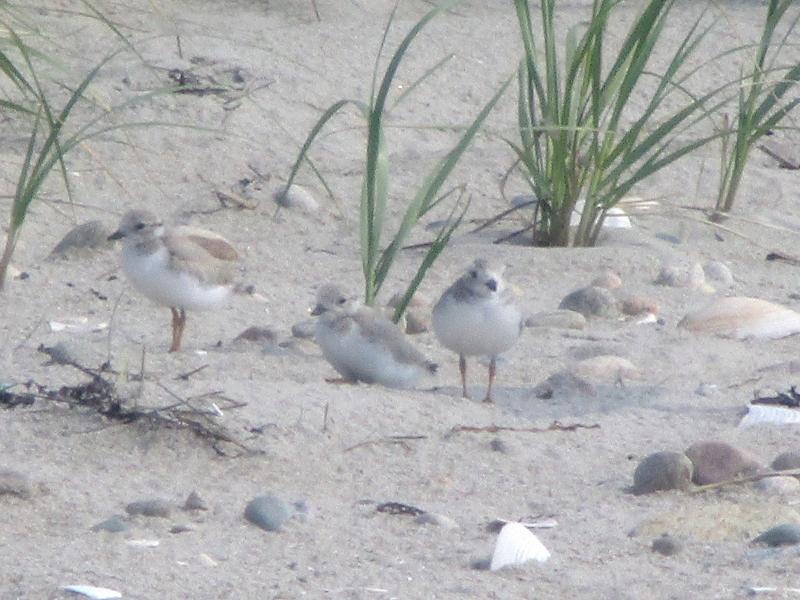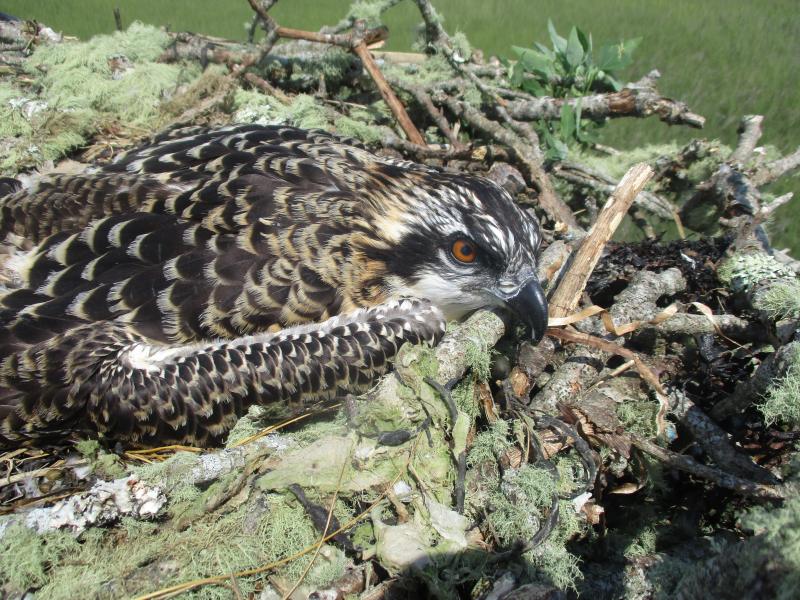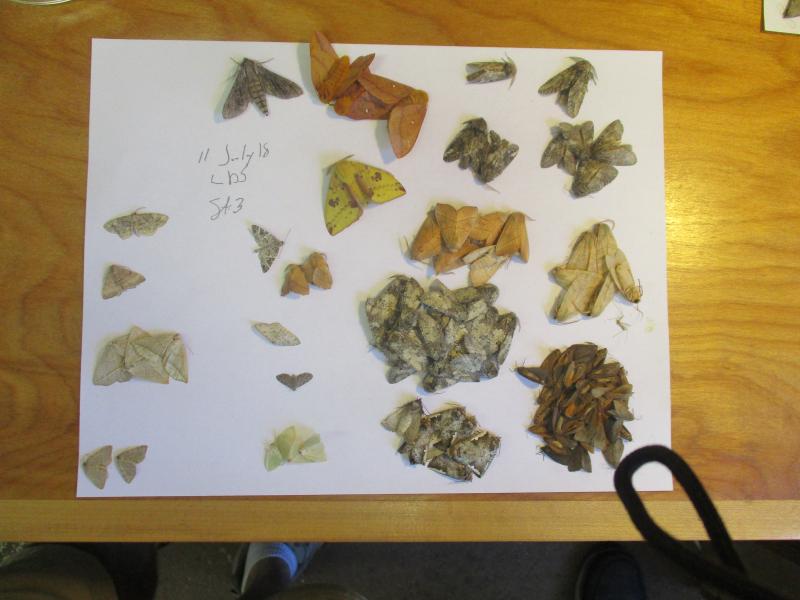Endangered Species Surveys: From the mainland to the islands (Lloyd Center research wrap-up 2018) by Jamie Bogart, Lloyd Center Research Associate
The Lloyd Center Research Department is heralded for both intensive efforts to preserve species and habitats at highest risk, and travelling far and wide across the landscape to get it done. This field season was no exception.
On the mainland, at the salt marsh that borders the Slocum River out to Demarest Lloyd State Park, it started with the Ospreys. While not an “endangered” species, Ospreys were at one time, a species at risk and were brought back due to human intervention by way of artificial platforms placed on salt marshes.
After successfully repairing some of our platforms that received storm damage, we watched three pairs of Ospreys return to the available platforms at the mouth of the Slocum, along with another pair to the platform on Little River. Combined, nine chicks were produced among all the nests, including seven on the Slocum River platforms. Of these at least six survived to fledge.
On the Slocum, the Lloyd Center collaborated with Mass Audubon to band six of the chicks, which can be tracked in future seasons. This more intensive look at our Ospreys provides a foundation for potential future funded projects that delve into more detail regarding various aspects of the nesting ecology of this fascinating and emblematic bird.
Shifting from marsh to beach … the Lloyd Center wraps-up its thirty-second year of protecting the endangered Piping Plover. In the first-ever season of not managing Horseneck Beach Reservation or Demarest Lloyd State Park after work was transferred to state hands, it was easy to believe the Lloyd Center would fade to the background for this high-profile conservation effort. However, small contracts with the Town of Fairhaven for West Island, and Bakers Beach in Westport, ensured us work on the project, but at sites largely hidden from public view. This is sure to change however, as results at each site this season were highlighted at the state cooperators meeting.
At West Island, for which funding finally came through, record numbers and productivity occurred on a site of growing importance, as it has a high density of birds on a site busy with light recreational activity. At Bakers Beach, two plover chicks from the same parking lot nest were rescued in the span of an hour – one from a pail of water on the beach, and another from a storm drain in the lot – both survived to fledge. Events at Bakers Beach shed light on the myriad of challenges any given plover pair may face in a season, no matter the size of the beach, and that management of small, private beaches is also important. Success at these sites all but ensures birds will return next year to nest, and continue adding to the population.
In the estuary, the Lloyd Center continues to contribute to the Buzzards Bay Coalition Baywatchers Water Quality Monitoring Program for the Slocum and Little Rivers by collecting samples that provide crucial data that depict how land use is impacting dissolved oxygen levels and nutrient loading, both of which impact estuary health. Results show that while the estuary is alive with traditional recreational uses, the habitat remains impaired compared to years ago and work must continue.
Finally, another cornerstone of Lloyd Center research, Lepidoptera (moth) work on the islands, continued this year. UV light trapping projects occurred on both Nantucket and Martha’s Vineyard to document rare moth species, which provides an inventory of an obscure but critical component of biodiversity, and documents records of endangered moths that can serve as a basis for land protection. The Lloyd Center also returned to Cuttyhunk in 2018 with a trip just completed (August 31-September 1), for a biodiversity survey of the Elizabeth Islands. Two trips are planned for September and October. This survey also features UV light trapping, along with samples of caterpillars and the documentation of butterflies during day surveys. Bird life is also noted as Cuttyhunk is a stopover for a high diversity of bird species.
Tune in next season, when more exciting research journeys are sure to unfold!

















